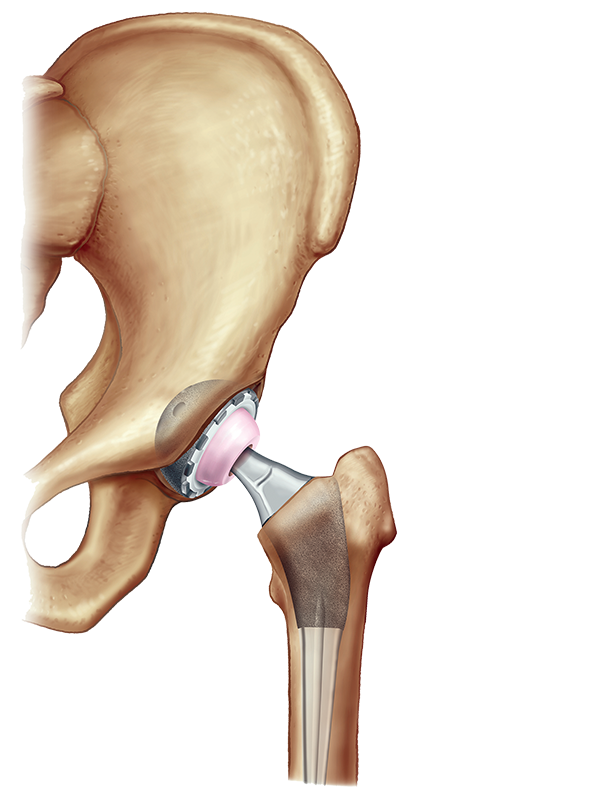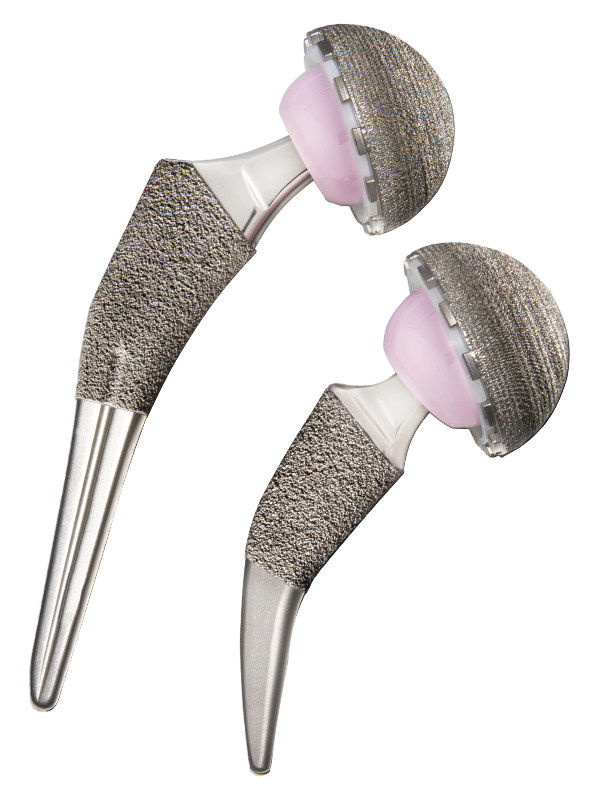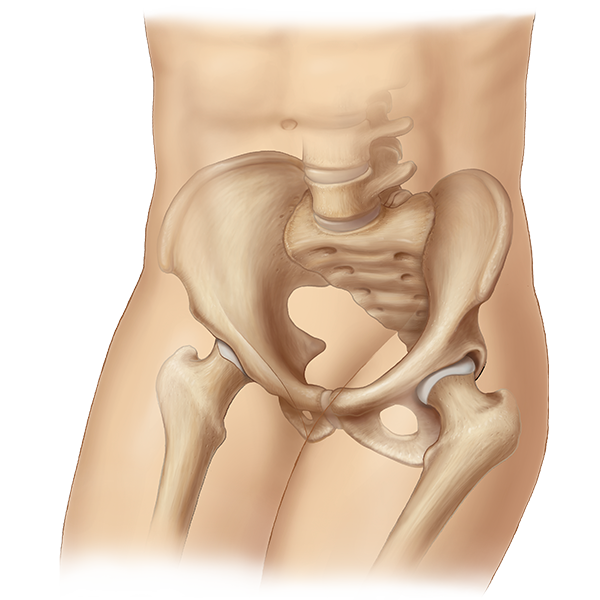Reemplazo Total de Cadera
Reemplazo Total de Cadera
¿Como funciona una cadera?
La articulación de la cadera recibe la fuerza de largos músculos y está cubierta por diferentes tipos de tejidos elásticos. Cuando todas las partes, músculos, cartílago y tendones están sanos la articulación se mueve fácilmente y sin dolor.
Una cadera esta enferma cuando uno o mas partes de la cadera están dañados, entonces el movimiento resulta molesto. Conforme avanza el tiempo, el cartílago comienza a romperse o a desgastarse. Cuando esto ocurre, los huesos comienzan a rozarse unos con otros. Las molestias y dolores aparecen cuando la cabeza femoral comienza a rozar con la cuenca acetabular. Desafortunadamente, el cartílago no tiene capacidad de regeneración como otros tejidos del cuerpo por lo que una vez que el cartílago esta dañado o destruido, su función se pierde.
¿Que es un reemplazo de cadera?
El procedimiento quirúrgico consiste en una incisión en la piel para acceder a la articulación de la cadera a través de los músculos, todo ello mientras el paciente se encuentra bajo los efectos de la anestesia
Ver vídeo Reemplazo Total de Cadera

Procedimiento de reemplazo total de cadera
La cuenca de la cadera (acetabulo) es preparada usando instrumentos específicos para hacerla del tamaño y de la forma del implante. La cabeza femoral es reemplazada por una bola artificial colocada sobre un vástago que se introduce en el hueso del fémur bajo encaje a presión o cementado (dependiendo de la preferencia del cirujano). Una copa (cotilo) metálica con un inserto interno es colocada en la cuenca acetabular proporcionando una superficie de fricción suave. La cabeza y la copa se juntan para completar el procedimiento.
Sistema de Cadera Exactech
Diseñado para maximizar el rango de movimiento
Los implantes del sistema de cadera total de Exactech han sido diseñados para proporcionar el máximo rango de movimiento gracias a su diseño innovador que proporciona solidez mientras preserva la anatomía del paciente tanto como es posible.
Caracteristicas del Sistema de Cadera Exactech
Componentes
Los mas avanzados materiales de fricción y sus demostradas características de diseño ayudan a reducir el desgaste y el estres sobre cada componente, ayudando a incrementar la vida util de los implantes.
Materiales
El material mas usado en los vastagos femorales es el titanio, el cual, ha demostrado que gracias a sus caracteristicas simula el crecimiento oseo y promueve la estabilidad del implante.1,2

Surgical Approaches
Direct Anterior Approach
The direct anterior approach to hip replacement surgery allows the surgeon to access the diseased hip joint through the front of the hip. A major advantage of this approach is that it allows your surgeon to work through natural intervals between the muscles around your hip, without having to cut through the muscles or detach them from the pelvis or thighbone.
This preservation of your soft tissues may result in a faster return to weight-bearing activities, less pain and a quicker overall recovery time. Keeping these muscles intact may also help reduce the likelihood of dislocation, which may occur when muscles weakened in surgery are not strong enough initially to keep the new femoral head in the socket. The patient can also avoid the pain of sitting on the incision site since the anterior approach is performed through the front of the hip.
Why aren’t all hip replacements performed through the anterior approach?
Hip replacement can be performed through:
- the back of the hip (posterior approach)
- the side of the hip (lateral or anterolateral approach)
- the front of the hip (anterior approach)
- or through a combination of approaches.
Direct anterior approach hip surgery requires implants and surgical instruments that are compatible with the approach. Specialized surgical tables, although not necessary, may facilitate the anterior approach by allowing precise positioning of the patient during surgery.
Watch Video on Direct Anterior Approach
Frequently Asked Questions
In order to minimize risks, your surgeon may have you see your family physician before surgery to obtain tests. You also may need to have any upcoming dental work completed or prepare your home to avoid any post-surgery falls.
There are implants that have been documented to last 15-20 years. However, there are numerous factors that affect the longevity of a total joint replacement including patient indications (age, weight and activity level), implant design and materials used during surgery.
Just like your natural joint, the components of an artificial implant are subject to wear over time from friction caused by bending, straightening and supporting your body weight.
Therapy may begin the same day as your surgery and may continue up to four to six months post-op. Exercise is crucial for proper rehabilitation to promote blood flow, strengthen muscles and regain motion. Proper rehabilitation and willingness to follow all of your surgeon’s recommendations will contribute to a more successful recovery after surgery.
Most patients are able to resume everyday activities like climbing stairs and possibly driving three to four weeks post-op depending on your surgeon and your condition. This includes waist-level activities like writing for shoulder replacement patients. Activities such as golf, doubles tennis and swimming can usually be resumed, but only after a thorough evaluation by your surgeon. Recovery time will vary for each patient.
High-impact activities or contact sports are typically not recommended. These types of activities place an extreme amount of pressure on the joints, which could lead to complications.
Joint replacement surgery is a major operation and although it is extremely successful in most cases, some patients may experience complications, including but not limited to: infection, blood clots, implant breakage, malalignment and premature wear. Any of these can require additional surgery.
- Date on file at Exactech. 711-12-80 Titanium Plasma Spray Technical Profile
- Date on file at Exactech. TR-2010-021. Implant Fixation in an Ovine Model (EBM, DLMS, Plasma) – Execute Summary


